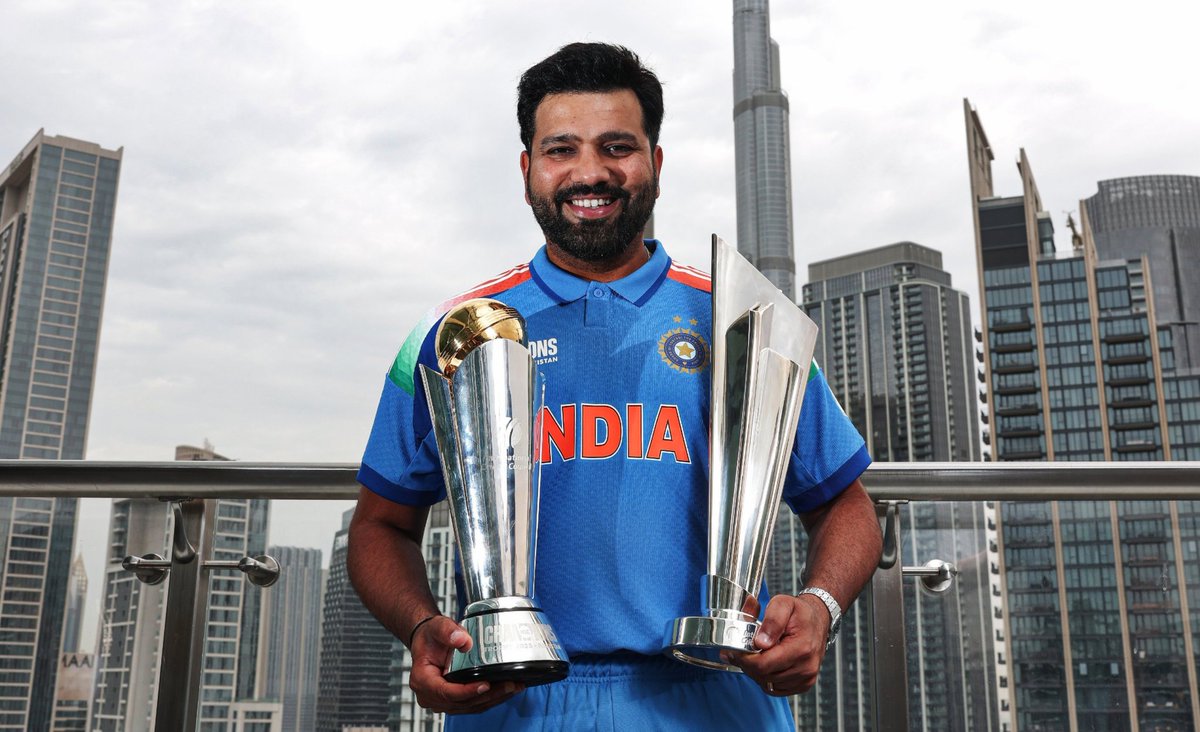Rumors have been floating around for the last few days that BCCI has decided to move on from Rohit Sharma in ODIs, and if it's true, this marks the end of a fantastic career, especially in white-ball cricket. And since the next ODI World Cup is in 2027, this gives selectors and the BCCI ample time to groom someone like Jaiswal to take Rohit's spot. Now, all this warrants a question: do we even need to look beyond Rohit for the 2027 World Cup?
To answer this question, we need to look at his numbers. Since 2022, Rohit has scored 1963 runs in 45 innings at an average of 47.88 with a strike rate of 116.85. Now, in this same time period, Virat Kohli has scored 2012 runs in the same number of innings, averaging 51.59; Gill 2726 runs in 52 innings, averaging 61.8; Iyer 2032 runs in 45 innings, averaging 50.80; and KL Rahul 1534 runs in 42 innings, averaging 49. But Rohit Sharma has been the fastest among them all with a strike rate of 116.85, Gill being second best with 100.37, Iyer marginally behind with 99.85, and Kohli and Rahul rounding out the list with 94.42 and 87.11, respectively. In this same time period, Rohit has eighteen 50+ scores and is tied with Iyer for 3rd spot, the first two being Gill with twenty-three 50+ scores and Virat with twenty 50+ scores.
Looking at these numbers, you realize that Rohit is almost 16% faster than the second-best batter, but there are arguments against him, too, the first one being his age. Rohit isn't considered amongst the fittest players in this ICT, and he'll be 40 by the time the next World Cup arrives. Will he be able to bat with the same intensity after fielding for 50 overs or vice versa?
Another argument against him is his poor record on South African pitches. At Kingsmead Durban, he's scored 50 runs in 3 innings at an average of 16.67; at Newlands Capetown, he has 23 runs in 2 innings at an average of 11.50; at St. George's Park, he has 116 runs in 2 innings at an average of 58; and at Supersport and Wanderers, he has 35 and 32 runs, respectively, in 3 innings each at an average of 11.67 and 10.67. So all in all, he has only one 50+ score, his 116 at St. George's Park in 13 innings. But the last time he played in South Africa was 7 years ago, with Rohit missing ODI tours to South Africa both in 2021 and in 2023. So even though his record isn't great in South Africa, things aren't as straightforward as they seem.
One more thing that we need to consider is the type of pitches we might get there. Earlier, it used to be fast, bouncy pitches, but in the last few years, pitches there have changed quite a bit, with the average 1st inning total being 262 since 2022, which used to be around 220-230. So most signs point towards batting being easier there as compared to earlier. And one thing that was evident during the knockout stages of the Champions Trophy, the last time India played any ODI cricket, was that after getting to 30-35, Rohit was trying to rotate strike and wait for loose balls as compared to going after the bowling. Now, this could be due to the low, slow nature of those Dubai pitches, or this could be Rohit 3.0, where he attacks first to get the team off the blocks quickly and then waits for the loose balls in the middle overs to keep them ahead of the scoring rate.
So is it really time to look beyond Rohit Sharma in ODIs too? Honestly, it's a million-dollar question, and we don't have an answer, but it'll be a brave decision either way.

